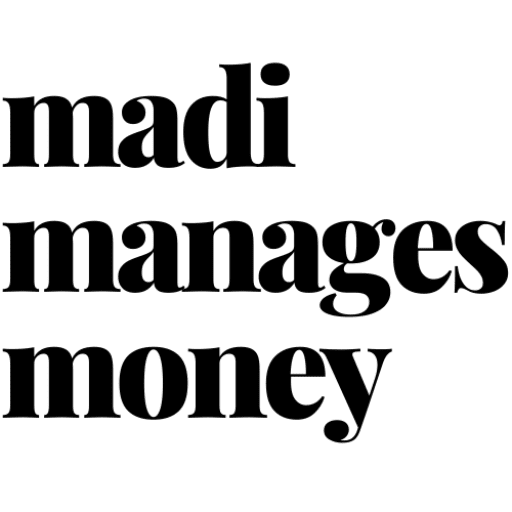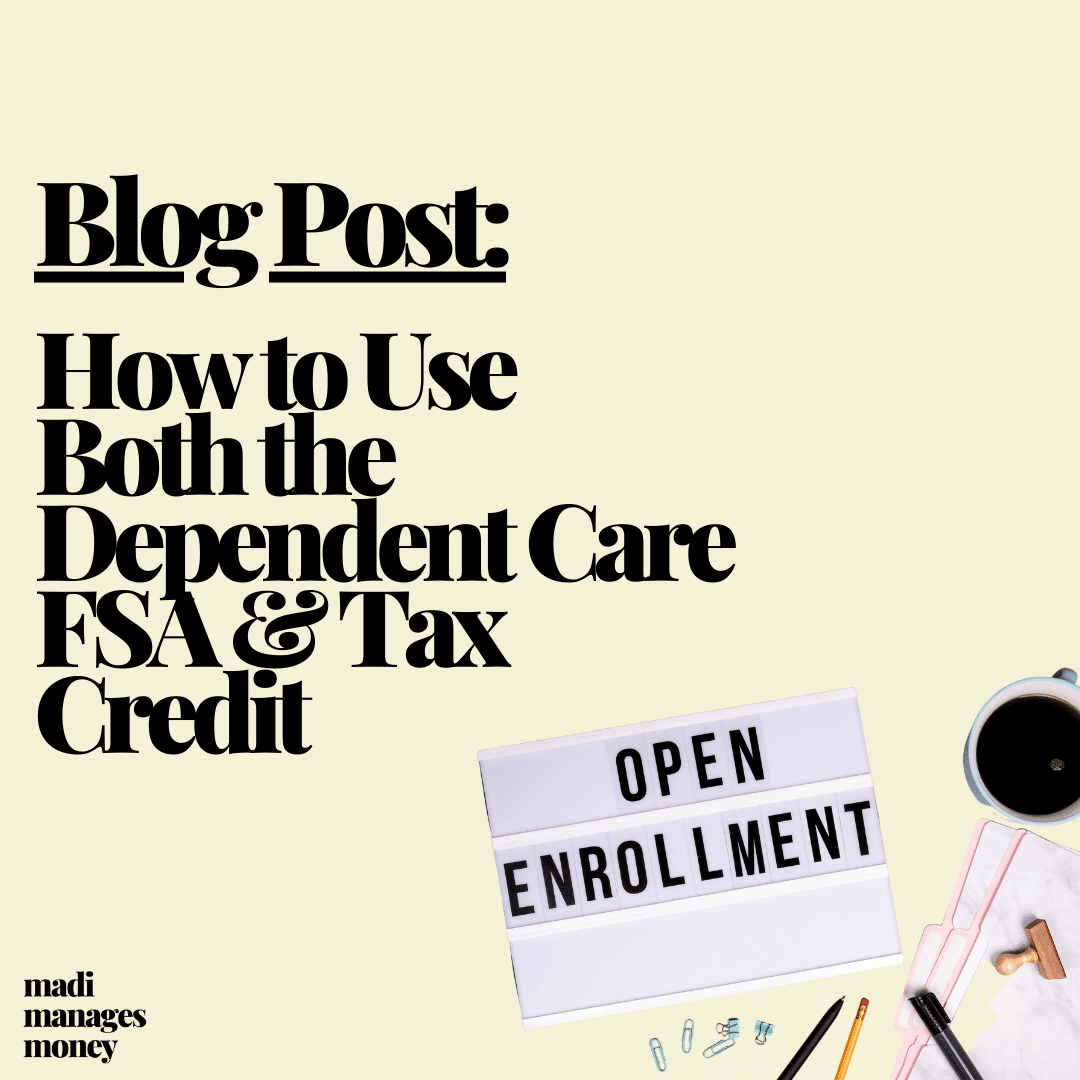Comparing the Dependent Care FSA vs. Tax Credit & Exploring How to Use Both
If you’re a working mother, chances are good you pay child care expenses and a lot of them.
In a 2023 study by Care.com, 67% of American parents were spending 20% or more of their annual household income on child care. This was up from 51% of income in 2022. 79% of the parents surveyed said they expected to spend more than $9,600 per child in 2023. 🤯
Two potential solutions exist to help defray the cost of child care. You’ll want to have these in your back pocket during your company’s open enrollment process.
- Dependent Care FSA (DCFSA) – an account with tax perks
- Child and Dependent Tax Credit – a tax credit
This blog post explores what each is and how you can leverage them both at the same time for maximum benefits.
What’s a Dependent Care FSA (DCFSA)?
The dependent care FSA is a type of account offered through your employer to help pay for child care expenses. The only way to access one of these bad boys is through an employer; you can’t open a DCFSA up at an online broker.
You can defer up to $5,000 per year from your paychecks into your DCFSA that is free of income and payroll taxes. Said differently, you get a tax deduction for the money you contribute to your DCFSA. We like that!
The higher marginal tax bracket you fall into (i.e., the more money you make), the more valuable your DCFSA tax break is.
For example, here are the income tax savings you’d enjoy if you fell into the following brackets:
- 24% marginal bracket – for contributing $5,000, you’d save $1,200 on taxes
- 32% marginal bracket – for contributing $5,000, you’d save $1,600 on taxes
Additionally, you’ll save payroll (or FICA) taxes on contributions to your dependent care FSA. FICA taxes are a flat 7.65% in addition to your marginal tax savings above.
Using Dependent Care FSA Money
Your dependent care FSA can be used for child care expenses – including preschool, an in-home nanny, nursery school, daycare, and summer day camp – for your children under age 13. It can also be used for adults and minors who are 13 and older who are unable to care for themselves.
It does not cover things that are considered more “enriching,” like tutoring, kindergarten tuition, or music lessons.
A key rule is that for expenses to qualify, they should be incurred during your working hours. Everyone loves a good child-free date night with your partner, but those babysitter costs won’t qualify as a valid, reimbursable expense. They weren’t incurred during your working hours.
With the DCFSA, you’ll be reimbursed for child care expenses that you first pay out of pocket, so you’ll want to keep receipts.
A major drawback of the dependent care FSA is that it has a “use it or lose it” provision. Like any other FSA, money in this type of account does not get rolled over to the next year. If you don’t use all of the money in your DCFSA by December 31, it disappears.😟
(Note: this is the opposite of how a Health Savings Account (HSA) would work. You want to stuff an HSA to the gill and keep money growing in there as long as possible.)
In any given year, this means you won’t want to contribute more to your DCFSA than you’ll actually spend on child care expenses. You can’t take it with you, as they say!
Meet the Child and Dependent Care Tax Credit
The dependent care tax credit can be claimed on child care expenses for children under the age of 13. Expenses for adults and minors who are 13 or older but cannot care for themselves are also covered.
This is a tax credit, meaning it directly reduces your tax liability (i.e., the tax bill you get after you file your taxes).
On your tax return, you can claim up to $3,000 in expenses for one dependent or $6,000 in expenses for two or more dependents. (Can we take a moment to lol at these amounts?🤦♀️)
Just a portion of these claimed expenses – between 20-35% – actually flow through as your tax credit. The higher your family’s income, the closer to the 20% you’ll get. The lower your family’s income, the closer to the 35% you’ll get.
This results in the following potential maximum dependent care tax credits:
- One dependent – $600 to $1,050
- Two or more dependents – $1,200 to $2,100
Dependent Care FSA vs. Tax Credit: How to Use Both
The dependent care tax credit can be claimed in conjunction with contributing to a dependent care FSA. The only trick is dependent care FSA reimbursements and the tax credit cannot be claimed on the same child care dollars spent. No double dipping.
For most families, because we spend way more than we can contribute to our DCFSA ($5,000 max) and way more than the tax credit reimburses, we have more than ample expenses to soak up both.
Let’s look at two simple examples.
Pretend you have one child, and you pay $8,000 in child care expenses for them in one year. Here’s a permissible way to allocate expenses between a DCFSA and the tax credit.
- Pay the first $5,000 in expenses from your DCFSA
- Claim the remaining $3,000 as dependent care tax credit expenses
Now, what if you have one child and only incurred $6,000 in child care expenses for the year? That changes things. Here’s a permissible way to use both.
- Pay the first $5,000 in expenses from your DCFSA
- Claim the remaining $1,000 as dependent care tax credit expenses
In the second example, you’d only be able to claim $1,000 to prevent double dipping.
If you don’t have enough child care expenses to go around…
If you’re in a situation where your child care expenses are less than $8,000 a year for one child or less than $12,000 for two or more, first of all, I love that for you. Second of all, you’ll want to decide whether you use the DCFSA or tax credit first since you don’t have enough dollars to spread over both.
The financial planner playbook is to first use your dependent care FSA and then claim the dependent care tax credit for what’s leftover. I’d recommend this for a few reasons.
Since the money in your dependent care FSA can’t be rolled over to next year, you’ll want to spend it first. Don’t put yourself in a situation where you’re racing against the clock on New Year’s Eve to reimburse yourself for child care expenses.
Also, generally, the tax deduction you get from the dependent care FSA is going to be more valuable than the dependent care tax credit will be. In fact, the higher earnings your family has, the more valuable the dependent care FSA deduction gets.
An exception that might flip this order is if you’re earning a low income and have multiple children. The reality is, though, that if your income is low enough for this exception to apply, you’re unlikely to have access to a DCFSA in the first place, rendering the debate moot.
The Bottom Line
If you work for a company that offers a dependent care FSA, and you’re going to be paying for child care expenses over the year, taking advantage of the DCFSA is a no-brainer. You’ll enroll for your account and decide how much to contribute during open enrollment.
This is money you’re spending on child care no matter what. You might as well reduce your tax bill while you’re at it.
As you’ve probably realized, the dependent care FSA vs. tax credit debate usually isn’t an either-or situation. They can be used simultaneously as long as you have enough child care expenses to go around!
Madi 🫡
The opinions voiced in this material are for general information only and are not intended to provide specific advice or recommendations for any individual. To determine which investments may be appropriate for you, consult with your financial advisor.

